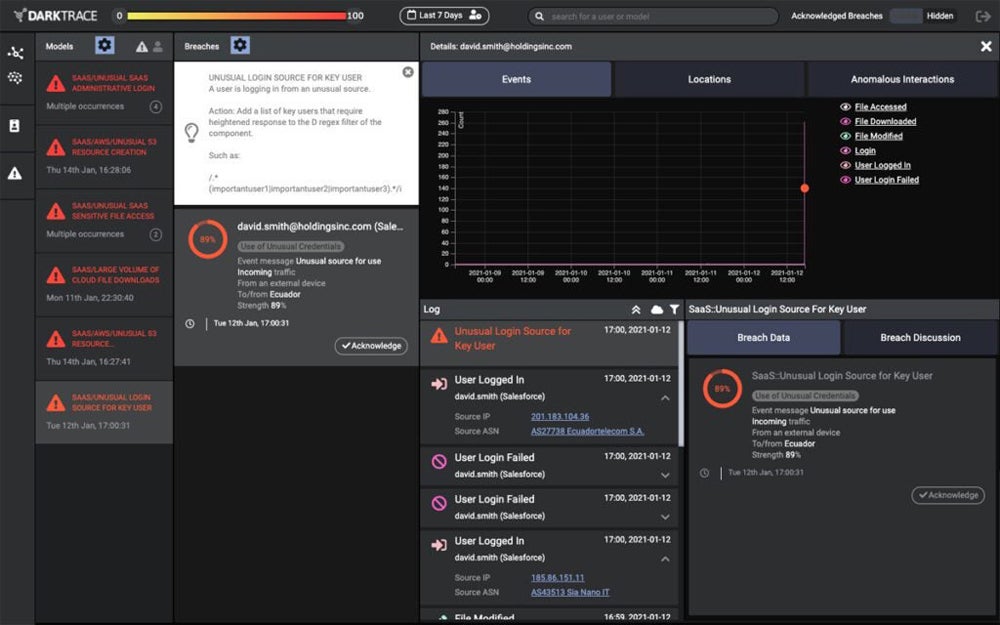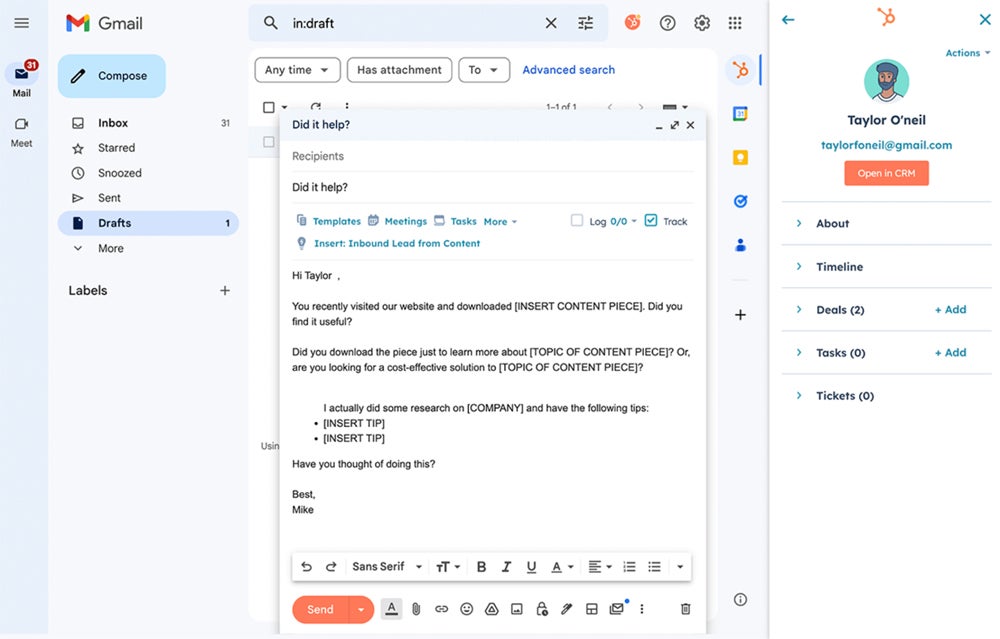Snowflake and Looker are each main enterprise intelligence (BI), information analytics, and information administration platforms with a robust following.
These information options are in heavy demand as organizations search to harness the huge troves of information at their disposal. As an alternative of a small crew of information scientists slicing and dicing information, right this moment groups from administration, advertising and marketing, gross sales, and IT are using massive information of their day-to-day actions.
As each Snowflake and Looker are properly regarded information administration and analytics platforms, customers typically should select between them. There are arguments for and in opposition to every information resolution.
Which of those well-respected information platforms is finest? Each present the quantity, velocity, and high quality demanded by enterprise intelligence functions. However there are as many similarities as variations between them. They’ve totally different approaches to the info sector. Due to this fact, choice typically boils all the way down to information platform desire and suitability for the group’s massive information technique.
Additionally see: Greatest Information Analytics Instruments
Snowflake vs. Looker: Key Options
Snowflake is a relational database administration system and analytics information warehouse for structured and semi-structured information. Provided by way of the Software program-as-a-Service (SaaS) mannequin, it makes use of an SQL database engine to handle how data is saved within the database. It processes queries in opposition to digital warehouses inside the total warehouse, each in its personal cluster nodes, impartial of others and never sharing compute assets.
Sitting on prime of which might be cloud providers for authentication, infrastructure administration, queries, and entry controls. The Snowflake Elastic Information Warehouse permits customers to research and retailer information using Amazon S3 or Azure assets.
General, Snowflake needs to be regarded extra as a knowledge lake or information warehouse that facilitates analytics than a full-featured analytics software. As such, it’s significantly good at managing, processing, aggregating, and sharing giant quantities of information throughout a enterprise. Good archiving options are additionally current.
Late in 2022, Snowflake launched some platform updates. These included efficiency developments throughout its single elastic engine to make it quicker whereas bettering economics for customers. As well as, Snowflake’s Snowgrid know-how permits prospects to function at world scale with enhancements throughout cross-cloud collaboration, cross-cloud information governance, and cross-cloud enterprise continuity.
Looker, which was acquired by Google two years in the past, is web-based and provides loads of analytics capabilities that companies can use to discover, uncover, visualize, and share analyses and insights. Enterprises can use it to drill down into information.
Looker takes benefit of a particular modeling language to outline information relationships whereas bypassing SQL. Looker leverages its Google possession by being tightly built-in with an ideal many Google information units, together with Google Analytics. It earns good marks for reporting granularity and scheduling, together with actual time analytics and actual time experiences. Customers touch upon its skill to construct dashboards for customers for use in self-service analytics all through the enterprise.
Snowflake has sturdy assist for JSON-based capabilities in addition to database upkeep automation. It supplies columnar storage and massively parallel processing (MPP) for simultaneous analytics computations and quick querying even on large datasets. Moreover, it retains compute, storage, and cloud providers separate in addition to concurrent scaling. It possesses a wealth of analytics options together with cellular information exploration, analytics dashboards, the publishing and embedding of analytics content material, information supply connectivity, and cloud-based BI.
General, Looker wins on broad analytics options. However for these needing stronger information warehousing and information administration instruments, Snowflake excels.
Snowflake vs. Looker: Assist and Ease of Use
The Snowflake information warehouse is claimed to be user-friendly, with an intuitive SQL interface that makes it comparatively easy to get arrange and operating. It automates information vacuuming, compression, analysis, and different options. There isn’t any want to repeat information throughout scale up operations with Snowflake.
On third-party information sharing and accessing it to conduct evaluation, Snowflake makes your complete course of easy. It helps structured and semi-structured. Customers additionally report that its skill to deal with many columns is powerful. However some say the documentation is weak and {that a} lack of out-of-the field analytics holds it again. Gartner Peer Opinions give it a very good rating on ease of deployment and administration. Snowflake supplies 24/7 stay assist.
Looker is claimed to have a steep studying curve as a result of want to make use of the LookML proprietary programming language. However these accustomed to that language say that after discovered, it’s straightforward to make use of. They are saying it’s price it by way of having the ability to outline information relationships and bypass SQL. They add that it streamlines the distribution of insights to employees throughout many enterprise items.
As soon as the educational curve is mastered, customers say how easy it’s to make use of the platform for analytics. Visualizations, although, are comparatively primary in keeping with some customers. That mentioned, Looker’s drag and drop interface and pre-built templates and information fashions assist analysts repeat comparable analyses quickly fairly than beginning once more from scratch.
On this class, Snowflake wins.
Additionally see: What’s Information Visualization
Snowflake vs. Looker: Safety
Snowflake boasts always-on encryption, together with community isolation, safe access-based requests, and different sturdy security measures. These options are tiered, with every increased tier costing extra. Meaning you don’t find yourself paying for security measures you don’t want or need.
As with many hyperscaler-based instruments, safety is each an enormous plus and a priority. Google says Looker is secured by its sturdy public cloud protections. The corporate takes accountability for code high quality however configuration of safe entry between Looker and enterprise databases is as much as the person. Customers are additionally answerable for controlling entry and permissions for customers of Looker situations.
Snowflake wins on safety.
Snowflake vs Looker: Integration
Snowflake is on the AWS Market however just isn’t so embedded inside the AWS ecosystem and lacks the seller partnership depth and breadth that Google can muster. Some customers say that with sure analytics functions, it may be difficult to combine Snowflake. However in different analytics use instances, Snowflake is splendidly built-in. Tableau, Apache Spark, IBM Cognos, and Qlik are all totally built-in. These utilizing these instruments will discover evaluation straightforward to perform. Gartner Peer Opinions charges Snowflake extremely for integration and deployment.
Looker can be in a position to run Home windows, Mac, and Linux. It provides APIs and different technique of exporting its information fashions to exterior visualization platforms. And naturally, it’s intently built-in with many Google information sources. Gartner Peer Insights scores it properly on integration.
Integration: Looker wins.
Snowflake vs. Looker: Pricing
Looker isn’t low-cost. Some sources have its costing as a lot as $35,000 per yr for enterprise deployments, with addition month-to-month charges due for options akin to dashboard views, dashboard creators, and for builders. However these needing these enterprise-class options associated to the distribution of customers and reporting appear pleased to pay. Some tough estimates put Looker at round $60 per 30 days per person. However that may differ considerably from deployment to deployment.
Snowflake prices about $40 a month. However once more, price of utilization will differ tremendously relying on the workload. Some customers say giant information units price extra on Snowflake as a result of it providing separate pricing for compute and storage. On-demand pricing is a characteristic of Snowflake. It additionally supplies concurrency scaling mechanically, with all editions at no further price. Pricing, although, will be complicated with 4 totally different editions from primary up – and costs rise as you progress up the tiers. You may both pay for capability upfront or select the pay-as-you-go mannequin for storage.
Variations between the pricing fashions make it tough to do a transparent apples-to-apples comparability. Customers are suggested to evaluate the assets they count on to want to assist their forecast information quantity, quantity of processing, and their evaluation necessities. This class is an in depth comparability because it varies from use case to make use of case, however Snowflake seems to win by a hair on pricing.
Additionally see: Information Mining Strategies
Snowflake vs. Looker: Conclusion
Snowflake and Looker are glorious instruments. Every has its execs and cons. The selection between them comes all the way down to utilization patterns, information volumes, workloads, and information methods. Gartner Peer Opinions scores Snowflake a little bit forward of Looker in areas akin to total product capabilities. However the merchandise are totally different sufficient that such a score shouldn’t be the deciding issue.
Snowflake is finest when information administration, integration, and sharing are the most important wants. These desirous to centralize information throughout a number of information repositories and with giant quantities of information will discover it invaluable. Prime-notch analytics will be added on by way of different platforms.
Looker, then again, is finest when the primary want is for information analytics. Due to this fact, these which might be already settled on an analytics software are suggested to go for Snowflake. Whereas these missing a contemporary analytics engine ought to favor Looker. There are particular enterprise person wants for reporting and analytics distribution the place Looker excels. And for these closely leaning on Google platforms, it provides benefits to expert analysts.
Some say Snowflake is best when you’re beginning small and step by step scaling up. However these are generalities and every enterprise must analysis how prices will work out for them. For some, Looker’s bundling of compute and storage will make it less expensive. However the reverse would possibly maintain true for different workloads. In these instances, Snowflake’s skill to separate compute and storage pricing could also be finest.
Additionally see: Prime Enterprise Intelligence Software program












